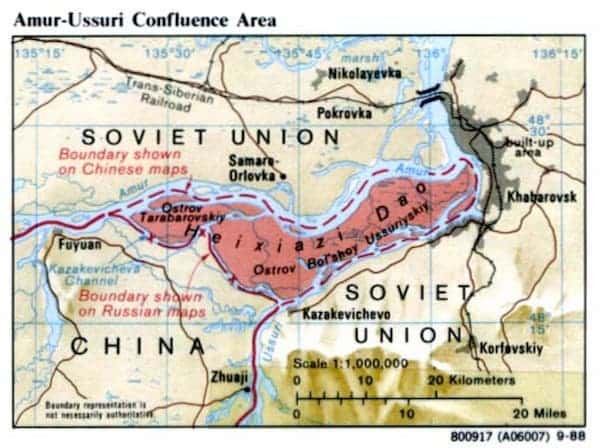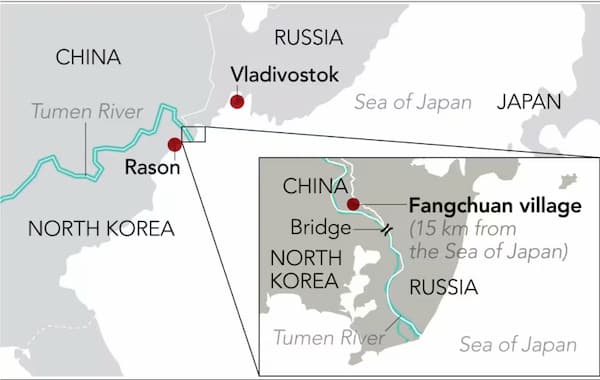China and Russia’s “Friendship Without Limits” Has Been Tested in 2023 and 2024. It’s Unlikely This Will Be the Last Time China Puts Russia to the Test
Former UK Foreign and Prime Minister Lord Palmerston once said that in geopolitics, there are no permanent friends, only permanent interests..
Historically, Relations Between China and Russia Have Been Tense
China’s foreign policy has often been shaped by its differing geopolitical interests. This is particularly the case with India, the Soviet Union, and the USA. In the 1970s, for example, China sought reconciliation with the USA. At that time the USA was economically weak and politically challenged from e.g. the Vietnam War and oil price shocks. This reconciliation followed the 1971 UN General Assembly's recognition of the People's Republic of China instead of the Republic of China (Taiwan). The rapprochement was further cemented by Nixon’s visit to China in 1972.
Both China and Russia declared themselves communist states from 1949. However, their doctrines were different, as were their geopolitical interests. In the 1950s, Chairman Mao increasingly criticized the Soviet Union for seeking “peaceful coexistence with the West” and for pursuing good relations with India. In 1961, Mao even accused the Soviet Union of being “revisionist traitors.”
In 1969, a seven-month-long military border conflict broke out in the areas around the Ussuri River near Khabarovsk. During the Qing Dynasty, these areas were named Outer Manchuria. They were however seceded to Russia under the Treaty of Peking in 1860.
It wasn’t until the 1980s that China sought détente with the Soviet Union when the latter faced difficulties in Afghanistan.
In May, China Gained Full Access to Bolshoi Ussuriyski Opposite Khabarovsk...
It wasn’t until 1991 that the border conflict over the Ussuri River was resolved with a border agreement between China and Russia. This agreement led to the 2001 “Treaty of Good-Neighborliness and Friendly Cooperation Between Russia and China.” This so-called Friendship Treaty had a duration of 20 years, expiring in 2021. Despite attempts by Russia to extend the treaty, Beijing was slow to respond to their requests.
In August 2023, the Chinese Communist Party (CCP) published a new map. This marked a 340 km² border area just west of the city of Khabarovsk, Bolshoi Ussuriyski, as Chinese territory. Since 2004, the area had been shared between Russia and China. This division had led to significant demonstrations in Khabarovsk in 2005 by Cossack minorities. They called for Putin to annex the entire area. Bolshoi Ussuriysky's value lies primarily in its military-strategic position. This is directly opposite the largest and most important city in the Russian Far East, with 630,000 inhabitants.
China’s revised map prompted Putin and Lavrov to significantly increase their visits to China. In mid-May 2024, Putin and Xi Jinping signed a new agreement on the area. This included a five-year extension of the Friendship Treaty. Moving forward, Bolshoi Ussuriyski will be subject to “joint exploration.” Russian media portrayed this as a sign of friendship and good diplomacy between the nations, while Chinese media spoke of historical justice.
...And in July, China Also Gained Access to Navigate the Tumen River
The extension of the Friendship Treaty came with an additional condition. Russia promised to work to persuade North Korea to agree to a tripartite agreement. This should allow Chinese cargo and naval vessels to navigate the Tumen River for loading and provisioning. This would give the otherwise landlocked Jilin province (since 1860) access to the Sea of Japan. Militarily, this would be a significant victory for China.
North Korea was not particularly enthusiastic about the prospect of giving China’s navy access along its border. However, North Korea’s recent and much-needed arms export agreement to Russia made it mostly a matter of terms. In early July, the parties reached an agreement to grant China full access.
Is the Next Step a Reunification of Manchuria?
Recently, Chinese historians have begun to focus on how Outer Manchuria was part of the Qing Dynasty. They have also focused on how it was lost during the “Century of Humiliation” from 1842 to 1949. The Qing Dynasty is often also referred to as the Manchu Dynasty.
Manchuria is rich in minerals and has significant industrial activity. The ice-free deep-water port of Vladivostok serves as the base for Russia’s Pacific Fleet and is a vital supply line for the entire Russian Far East. Therefore, much is at stake, especially for Russia.
The three remaining Chinese provinces of Manchuria—Heilongjiang (named after the Ussuri river), Jilin, and Liaoning—are still some of China’s most important mining areas. The provinces’ extraction and industrial activities have been crucial to China’s industrial and economic boom since 1980, when Deng Xiaoping’s reforms began.
However, in the last 20 years, the industry activity here has seen a significant decline. Today, the provinces are often referred to as China’s Rust Belt. This is comparable to the USA’s former “Steel States” of Ohio and Pennsylvania. The provincial governments have some of the highest debt-to-GDP ratios and are struggling with depopulation, housing overcapacity, and social problems. There is a lack of good news here.



